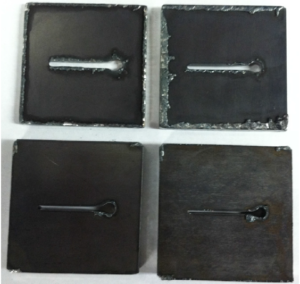The plasma cutting is a consolidated technology, born in the Sixties for machining processes of aluminium and stainless steels in the aerospace industry. Over the years, there were two growth directions of that process: the first thanks to the process control and to the new torch materials has opened the possibility of using oxygen and air that has extended the range of machinable materials, especially to carbon steels; the second consists in the introduction of the high-definition plasma cutting, characterized by higher quality beam compared to conventional systems. The high-definition plasma beam, in fact, is characterized by minor beam diameter and higher power, characteristics positively influencing the quality of the cutting groove. Even if plasma cutting systems are widely diffused and even if constant improvements are introduced into devices, that process has and receives scarce attention by the scientific community. The main factor is the “bad name” that the process has among non-conventional machining operations, coupled with the complexity of the physical phenomena describing it. Nevertheless, some researchers have presented a new method to measure the attachment point of the arch where the arc voltage is measured while cutting with a broad thickness range. The attachment position is then interpreted by voltages. To support the validity of this method, they observe also the cutting shape, the size of particles/slags and their adhesion to the piece.

The method is proven on the mild steel cutting, where the arch attachment proved to be stationary in the upper part of the cutting slot and in reasonable agreement with the existing results published. For an optimized process for the cutting of mild steel sheet metals with 12.7 mm thickness, the attachment is at a depth of 1.5-3.4 mm. For an optimized slow process for the cutting of sheet metals with 25.4 mm thickness, still of mild steel, the attachment is at a depth of 3.4 – 4.8 mm, which improves the heat transfer more in depth into the cutting, permitting the cutting of the piece itself. The use of voltage in the arc to locate the position of the arc attachment is unique compared to the existing methods, since it is fully independent from the heat distribution.
Source: D.J. Osterhouse, J.W. Lindsay, J.V.R. Heberlein, “Using arc voltage to locate the anode attachment in plasma arc cutting”, Journal of Physics D: Applied Physics, Vol. 46, N° 22, May 2013. DOI:10.1088/0022-3727/46/22/224013



